Van Zweden opens Philharmonic season with new Glass, intense Mahler
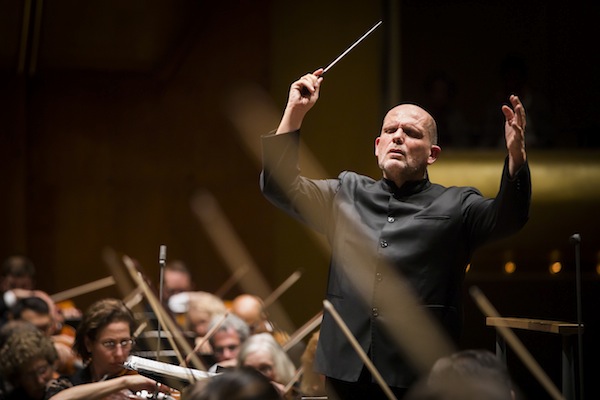
Jaap van Zweden conducted the New York Philharmonic in music of Glass and Mahler Friday night at David Geffen Hall. Photo: Chris Lee
Jaap van Zweden’s full-time position as music director of the New York Philharmonic doesn’t begin until next season (inasmuch as any music director position is full time in our era), but as his near future is set, he is the de facto leader of the orchestra. And that fact is reinforced by him opening the Philharmonic’s season this week.
After the opening gala Tuesday, Friday night was the first subscription concert, with van Zweden set to make his mark with a classical mainstay—Mahler’s Symphony No. 5—and with something new–Philip Glass’s Concerto for Two Pianos and Orchestra, written for the piano duo of Katia and Marielle Labèque. If a concert could conceivably be both stimulating and disappointing, this was it. Another first was that this was the very first Philharmonic performance of any of Glass’s music, ever.
Glass’s Concerto is almost brand new, dated 2015 with 2016 revisions, and was heard in New York for the first time at David Geffen Hall Friday night. The composer and his music, of course, are deeply familiar, and new pieces come with certain expectations.
As he has been doing for decades, in the Concerto Glass reuses rhythms and phrases that were first heard as far back as Glassworks and Koyaanisqatsi. And as he has been doing during his current, extended neo-classical period, he added some refreshing wrinkles.
These were acutely important in the concerto. In three parts, though with an unusual configuration of fast-fast-slow, the first movenent of the piece is desultory and overly familiar. The Labèques played throughout with strength, exuding the sense that they were dealing with something important. With the Philharmonic sounding stuffy and recessed, like a radio broadcast heard through a fever dream, things did not bode well.
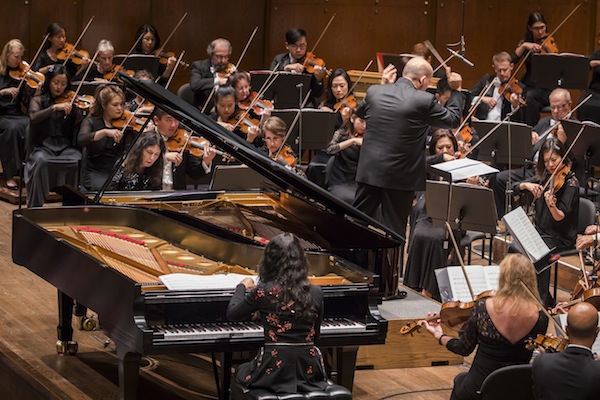
Katia and Marielle Labèque performed Philip Glass’s Concerto for Two Pianos Friday night. Photo: Chris Lee
But then the wrinkles came. The first was how little concerto-like soloing there was in the writing, the pianos instead stitched collaboratively into the orchestral texture, making for a rich and directed music. The second was a warm, graceful melody in the second movement that sounded new in Glass’s work.
Then came the marvelous, velvety, minor key final movement, with some of Glass’ subtlest and deepest harmonies which proved beautiful and affecting. The wistful poise of the music was inspired. The audience, coughing and shuffling inattentively through most of the performance, delivered a roaring standing ovation when the composer came out to take a bow.
That opening gave a look into what van Zweden’s taste might be. The Fifth Symphony gave him an opportunity to show what kind of conductor he is, taking on both the immense amount of traffic in the music and the even greater expressive range.
This was a performance that began with the dial turned up to 11 and kept pushing to see if the pot would go any farther. Full of seemingly inexhaustible energy and red-hot, it was an undeniably exciting performance. It was also a display of the talent of this orchestra, with every section and soloist playing brilliantly—the horn blends in the Scherzo alone were astonishing, and trumpeter Chris Martin and clarinetist Anthony McGill were both exceptional.
But yet while demonstrative, the performance was not especially deep or memorable. The energy was focused on the notes, leaving Mahler somewhere outside, looking in.
What was missing was any sense of expressive or emotional crisis, both for its own sake and to set the glorious moments in vital relief. Mahler was the embodiment of Fitzgerald’s dictum that a first-rate mind can hold two contradictory views simultaneously—with Mahler, those views were both embracing each other and at each other’s throats at the same time, all the time.
There was plenty of thunder and lightning, but all in the distance with no inner storm, and there was always sufficient shelter. Nor were the colorings quite right—the ländler rhythms of the scherzo lacked lilt, and without any raging against the dying of the light, the tenderness of the Adagietto seemed out of context. Van Zweden took a sober, solid view of the section, but it seemed like a postcard of an experience, not the real thing, and the strongest expressions sounded mannered.
The finale was almost breezy. Again, there was more than enough energy, but the obstacles van Zweden had set were eminently surmountable. A red-hot flame does burn, but it is the blue flame that is both most beautiful and most dangerous.
The program will be repeated 8 p.m. Saturday. nyphil.org
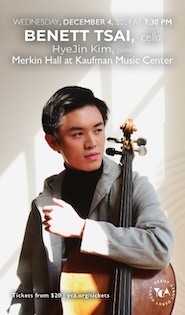
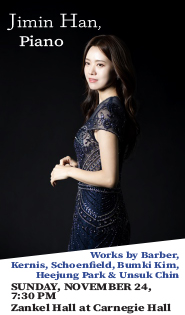
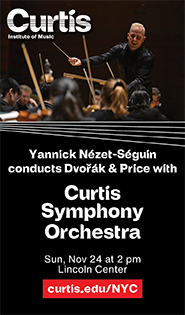
Posted Sep 27, 2017 at 10:41 am by Rex
Agree with your review of the Mahler. Zweden was a poor choice but maybe a logical choice to lead this orchestra. Technically superb but emotionally vacant.